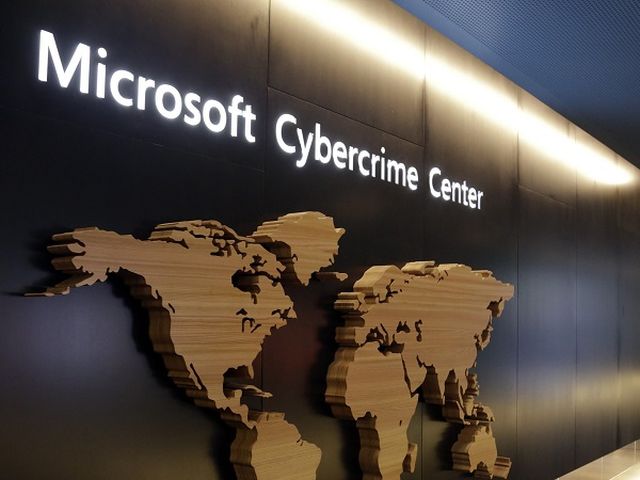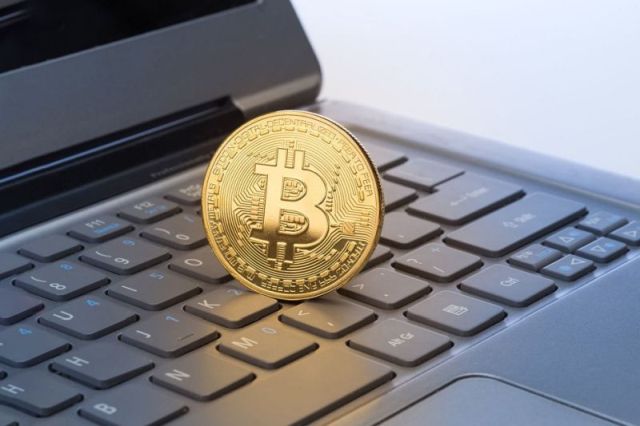
by admin | May 25, 2021 | Markets, Networking, Online Marketing, Technology
 By Nishant Arora,
By Nishant Arora,
New Delhi : As cybercrime becomes the new battlefield, Microsoft at its headquarters in Redmond, Washington, is working round-the-clock to intercept, analyse and mitigate threats — creating a road-map for various industry stakeholders to plan relevant actions.
The Global Cybercrime Centre is witnessing in real-time at least one billion end-point devices being infected from over three million unique IP addresses worldwide — from Seattle to New Delhi.
The 100-member strong Digital Crimes Unit (DCU) at the centre is using Next-Gen technology — Cloud, Big Data, Machine Learning (ML) and Business Intelligence (BI) — to improve the security of its products and services, protect vulnerable populations, fight malware and reduce digital risks.
According to Shilpa Bratt, Director (Shared Services) of Digital Crimes Unit, a team of 3,500 professionals is looking at security, built into Microsoft products and services, using frameworks such as the security development lifecycle and operational security assurance.
“We see cyber threats coming in real time. We can look at top threats and the most infected countries. This is like reverse Olympics where you don’t want to be on the top,” Bratt told a select media delegation visiting the campus earlier this month.
Nearly 30 people sit at the DCU and the rest in around 30 offices globally, including in India. Microsoft has set up a Cybersecurity Engagement Centre in New Delhi to empower organisations with information and techniques to secure critical information infrastructure and help reduce malware and digital risk.
The biggest threat, according to the Indian-origin Microsoft executive, is inside the Dark Web — part of the World Wide Web (www) that requires special software to access websites and other services.
“Based on the research we’ve done, we’ve identified 20 markets in Dark Web that are selling over 12 million corporate credentials.
“Who is behind the crime? You’ve probably heard of the basement hacker or the hobbyist hacker but it has evolved over the years and has now switched to organised crime syndicates and nation-state attacks, that are out for financial and political gains,” she emphasised.
According to her, $8 trillion will be the estimated cost of cybercrime to the global economy by 2022.
Today, about 90 per cent of successful cyber attacks start with a phishing email.
“And who are the victims? The victims are all of us — individuals, businesses, governments and our families at the end of the day,” she added.
The DCU has people from various walks of life — investigators, attorneys, analysts, engineers and business professionals.
“We come from all walks of life but we are very passionate. We have this common thread that runs through us — to protect customers, enforcement action against cybercriminals and bring those to justice,” Bratt noted.
The DCU is housed in one of the 122 buildings at the sprawling Microsoft campus — in the close vicinity of the company’s legal department or CELA (Corporate External and Legal Affairs).
Cybercrime is constantly evolving and entering new areas like tech support fraud and online child exploitation, among others.
Back in 2009, Microsoft partnered with New Hampshire-based Dartmouth College to develop a technology called “PhotoDNA” that creates a hash to uniquely identify an image, and store that hash at the back-end to match similar images online to prevent child pornography.
Today, over 130 organisations including Facebook and Twitter, are using “PhotoDNA”. The Indian government recently announced to collaborate with the National Centre for Missing and Exploited Children (NCMEC) in the US to curb the circulation of rape videos and child porn.
“We offer ‘PhotoDNA’ for free to any company who can legitimately use it. It is a very robust technology. The amount of false positives is very minuscule. Because it has existed for some time and we’ve iterated on the technology, it is becoming better and better,” Bratt informed.
To bolster its efforts, Microsoft has also collaborated with various stakeholders like law enforcement agencies, cyber security vendors, customers, NGOs and academia.
“The team that sits in this lab is our analytics and innovation team which is constantly looking for insights in the data that can help us drive progress when it comes to fighting cybercrime. When we find something that works, we create a proof of concept, pilot it, incubate it and operationalise that analytic,” she informed.
“Innovation is very critical in this field. We are trying to stay one step ahead of cyber-criminals and what is working in our favour is amazing talent at Microsoft that specialise in ML and AI,” Bratt said.
(Nishant Arora can be contacted at nishant.a@ians.in)
—IANS

by admin | May 25, 2021 | Markets, Online Marketing, Social Media, Technology
 San Francisco : After Facebook and Google, Microsoft has now banned advertisements showing cryptocurrencies and related products from its Bing search engine.
San Francisco : After Facebook and Google, Microsoft has now banned advertisements showing cryptocurrencies and related products from its Bing search engine.
“Because cryptocurrency and related products are not regulated, we have found them to present a possible elevated risk to our users with the potential for bad actors to participate in predatory behaviours, or otherwise scam consumers,” Melissa Alsoszatai-Petheo, Advertiser policy manager at Microsoft, said in a blog post on Wednesday.
“To help protect our users from this risk, we have made the decision to disallow advertising for cryptocurrency, its related products, and un-regulated binary options,” she added.
Bing Ads will implement this change globally in June, with enforcement rolling out in late June to early July.
Google in March announced that it would ban advertisements for cryptocurrencies and other “speculative financial products” across its ad platforms.
The ban on such advertisements would come into force from June.
In January, social media giant Facebook banned all ads promoting cryptocurrencies, including Bitcoin and ICOs.
According to media reports, Twitter was also likely to ban cryptocurrency, token sales and Initial Coin Offerings (ICO) advertisements on its platform.
—IANS

by admin | May 25, 2021 | Branding, Business, Markets, Technology
 By Nishant Arora,
By Nishant Arora,
Seattle (Washington) : Harnessing the power of Artificial Intelligence (AI) to help people with disabilities, Microsoft has announced “AI for Accessibility” — a new $25 million, five-year programme for developers globally including in India.
The programme will put AI tools in the hands of developers to accelerate the development of accessible and intelligent AI solutions for people with disabilities.
“It is important for us to figure out how to empower more people. It has been a personal passion of mine to help people suffering with disabilities like amyotrophic lateral sclerosis (ALS) and autism,” Microsoft CEO Satya Nadella told the gathering at “Build 2018,” the company’s annual developers’ conference here on Monday.
“AI for Accessibility is a grand programme for the researchers, NGOs and developers — providing them with platform technologies so that they can help over one billion people with disabilities,” Nadella added.
Only one in 10 people with disabilities globally has access to assistive technologies and products.
Meanwhile, several Microsoft applications are currently helping people who are deaf or hard-of-hearing with real-time captioning of conversations.
In India, students are creating AI and Machine Learning (ML)-based apps with the help from Microsoft.
“Practikality” app, developed by Amity International School, Gurugram, is one such ML-based assistant to help the differently-abled communicate efficiently.
“It is very interesting to see that students are applying the AI technology in different ways in several use cases, helping us in industries like healthcare and education,” Anant Maheshwari, President, Microsoft India, recently told IANS.
The tech giant last year hosted its first “Accessibility Summit” in India.
The summit featured unique technology-based projects that empower people with disabilities. These included innovations from non-profit organisations, assistive technologies developed by partners as well as Microsoft solutions.
The “AI for Accessibility” programme will be run by Microsoft Accessibility team and its leader Jenny Lay-Flurrie who is Chief Accessibility Officer.
“By making AI solutions more widely available, we believe technology can have a broad impact on this important community,” said Microsoft President Brad Smith.
“AI advances like these offer enormous potential by enabling people with vision, hearing, cognitive, learning, mobility disabilities and mental health conditions do more in three specific scenarios: employment, modern life and human connection,” Smith reiterated.
To begin with, the programme will provide seed grants of technology to developers, universities, non-governmental organisations and inventors.
“Next, we will identify the projects that show the most promise and make larger investments of technology and access to Microsoft AI experts to help bring them to scale.
“Thirdly, as we infuse AI and inclusive design across our offerings, we will help our partners incorporate AI innovations into platform level services to empower others to maximise the accessibility of their offerings,” Smith informed.
Helpicto, an application that turns voice commands into images, is enabling children in France with autism to better understand situations and communicate with others.
“Seeing AI” and auto alt-text features are helping narrate the world for people who are blind or low vision.
Microsoft last year introduced “AI for Earth” — a comprehensive programme to apply AI towards unlocking solutions to climate, water, agriculture and the biodiversity issues.
(Nishant Arora is in Seattle on an invitation from Microsoft. He can be contacted at nishant.a@ians.in)
—IANS

by admin | May 25, 2021 | Markets, Networking, Social Media, Technology
 Washington : Top 34 global technology and securities firms, led by Microsoft and Facebook, have signed a “Cybersecurity Tech Accord” to defend people from malicious attacks by cybercriminals and nation-states.
Washington : Top 34 global technology and securities firms, led by Microsoft and Facebook, have signed a “Cybersecurity Tech Accord” to defend people from malicious attacks by cybercriminals and nation-states.
The watershed agreement will prevent them help governments launch cyber attacks against innocent citizens and enterprises. It will also protect against tampering or exploitation of their products and services through every stage of technology development, design and distribution.
The 34 companies include Cisco, HP, Nokia, Oracle, VMware, Dell, CA Technologies, Symantec, Bitdefender, F-Secure, RSA and Trend Micro, among others.
“The devastating attacks from the past year demonstrate that cybersecurity is not just about what any single company can do but also about what we can all do together,” Microsoft President Brad Smith said in a statement on Tuesday.
The “Cybersecurity Tech Accord” is a public commitment among 34 global companies to protect and empower civilians online and to improve the security, stability and resilience of cyberspace.
“This tech sector accord will help us take a principled path towards more effective steps to work together and defend customers around the world,” added Smith who has been arguing for a “digital Geneva Convention” for years.
The companies made commitments in four areas — stronger defence, no offence, capacity building and collective action.
“The companies will do more to empower developers and the people and businesses that use their technology, helping them improve their capacity for protecting themselves,” said cybertechaccord.org.
This may include joint work on new security practices and new features the companies can deploy in their individual products and services.
The Tech Accord remains open to consideration of new private sector signatories, large or small and regardless of sector, who are trusted, have high cybersecurity standards and will adhere unreservedly to the Accord’s principles.
“The real world consequences of cyber threats have been repeatedly proven. As an industry, we must band together to fight cybercriminals and stop future attacks from causing even more damage,” said Kevin Simzer, Chief Operating Officer, Trend Micro.
The victims of cyberattacks are businesses and organisations of all sizes, with economic losses expected to reach $8 trillion by 2022.
The cyber attacks in the past have caused small businesses to shutter their doors, hospitals to delay surgeries and governments to halt services, among other disruptions and safety risks.
“The Tech Accord will help to protect the integrity of the one trillion connected devices we expect to see deployed within the next 20 years,” said Carolyn Herzog, General Counsel, Arm.
On Monday, Cyber security representatives from the US and Britain warned of Russian state-sponsored cyber-attacks that are targeting network infrastructure devices such as routers and firewalls, to compromise government and private sectors globally.
According to a US Computer Emergency Response Team (US-CERT), the Technical Alert provided information on the worldwide cyber exploitation by Russian state-sponsored cyber actors.
—IANS

by admin | May 25, 2021 | Business, Economy, Finance, Large Enterprise, Markets, News, Online Marketing, Technology
 New Delhi : Digital transformation will add close to $154 billion to India’s GDP by 2021 and increase the growth rate by one per cent annually, software giant Microsoft said on Wednesday.
New Delhi : Digital transformation will add close to $154 billion to India’s GDP by 2021 and increase the growth rate by one per cent annually, software giant Microsoft said on Wednesday.
According to a joint report by Microsoft and IDC Asia/Pacifc, in 2017, about four per cent of India’s GDP was derived from digital products and services created directly through the use of digital technologies such as mobility, Cloud, Internet of Things (IoT) and Artificial Intelligence (AI).
“India is clearly on the fast-track towards digital transformation. Within the next four years, it is estimated that nearly 60 per cent of India’s GDP will have a strong connection to the digital transformation trends,” Anant Maheshwari, President, Microsoft India, told reporters here.
“Organisations are increasingly deploying emerging technologies such as AI that will accelerate digital transformation led growth even further,” Maheshwari added.
The survey took into account 1,560 business decision makers in mid and large-sized organisations across 15 economies in the region.
According to the survey, organisations are seeing significant and tangible improvements from their digital transformation efforts across these benefits in the range of 11-14 per cent.
“Business leaders expect to see more than 40 per cent improvements in those key areas by 2020, with the biggest jump expected in productivity, customer advocacy as well as profit margins,” the report said.
Digital transformation has increased productivity, customer advocacy, cost reduction, revenue from new products and services as well as profit margin for the enterprises.
“These benefits will also improve by at least 40 per cent in the next three years, with the biggest jump expected in productivity, customer advocacy as well as profit margin,” the survey noted.
The study indicated that while 90 per cent of organisations in India are in the middle of their digital transformation journey, only 7 per cent in the entire region can be classified as “Leaders”.
“Leaders” are experiencing double the benefits of “Followers” and these improvements will be more pronounced by 2020.
Almost half of “Leaders” (48 per cent) will have a full digital transformation strategy in place.
Emerging technologies such as AI (including cognitive services and robotics) and IoT are areas where “Leaders” are investing in.
Besides these emerging technologies, “Leaders” are also more interested in investing in big data analytics to mine data for actionable insights than others.
“Organisations need to invest in building their ecosystem, from employees, to customers, to partners, across their value chain by gaining new insights through new data sources, and incorporating digitization in their products and services,” said Anil Bhansali, Managing Director, Microsoft India (R&D).
“The pace of digital transformation is accelerating, and IDC expects that by 2021, at least 60 per cent of India’s GDP will be derived from digital products and services,” added Daniel-Zoe Jimenez, Research Director Digital Transformation Practice Lead, IDC Asia/Pacific.
—IANS




